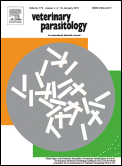This article relies largely or entirely on a single source .(August 2022) |
 | |
| Discipline | Veterinary parasitology |
|---|---|
| Language | English |
| Edited by | Andy Greer, Martin K. Nielsen, Michael P. Reichel, Theo de Waal |
| Publication details | |
| History | 1975–present |
| Publisher | |
| Frequency | 12/year |
| 2.738 (2020) | |
| Standard abbreviations | |
| ISO 4 | Vet. Parasitol. |
| Indexing | |
| CODEN | VPARDI |
| ISSN | 0304-4017 (print) 1873-2550 (web) |
| OCLC no. | 01939255 |
| Links | |
Veterinary Parasitology is a peer-reviewed scientific journal in the discipline of veterinary parasitology. It is the official organ of the American Association of Veterinary Parasitologists, the European Veterinary Parasitology College, and the World Association for the Advancement of Veterinary Parasitology. [1]